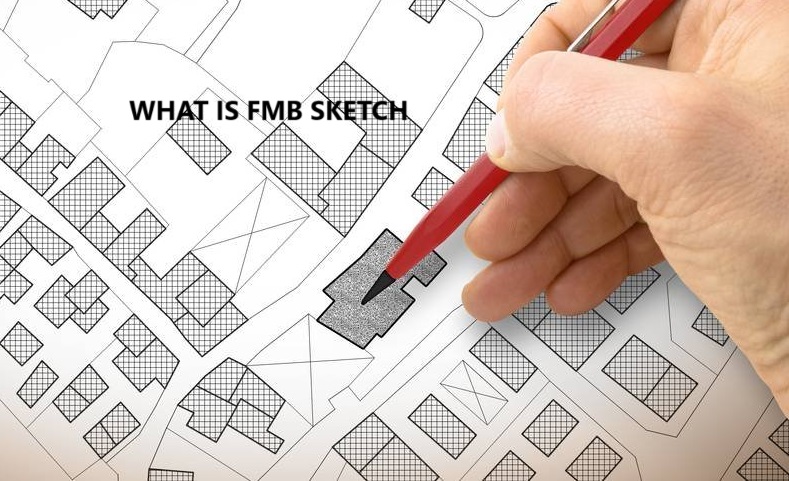The FMB sketch, or "Functional Model-Based Sketch," is a conceptual tool used primarily in engineering and design to represent the functional aspects of a system or product. Here’s a detailed breakdown:
Key Components of FMB Sketch:
-
Functional Representation:
- Purpose: The FMB sketch focuses on the functions that a product or system must fulfill rather than its physical form.
- Elements: It often includes boxes or ovals that represent functions, connected by arrows to indicate relationships and flow between them.
-
System Boundaries:
- Description: Clearly defines what is included within the system and what is outside of it.
- Importance: Helps stakeholders understand the scope of the design and the interactions with external systems.
-
User Interaction:
- Focus: Highlights how users will interact with the product or system, identifying key touchpoints and user needs.
- Considerations: May include aspects like usability, accessibility, and user experience.
-
Performance Metrics:
- Description: Indicates the criteria or metrics that will be used to evaluate the success of the functions.
- Examples: Could include efficiency, accuracy, speed, and reliability.
-
Integration of Subsystems:
- Representation: Shows how different subsystems or components contribute to the overall function.
- Clarity: Helps in understanding how each part interacts and integrates into the whole system.
-
Iterative Process:
- Nature: FMB sketches are often developed iteratively, allowing for feedback and adjustments as the understanding of functions and user needs evolve.
- Collaboration: Encourages collaboration among team members, ensuring all functional aspects are considered.
Applications of FMB Sketch:
- Engineering Design: Used to conceptualize the functions of mechanical systems, electrical circuits, or software applications.
- Product Development: Helps in brainstorming and refining product ideas based on user needs and system functions.
- Systems Thinking: Encourages a holistic view of complex systems, promoting better problem-solving and innovation.
Benefits of Using FMB Sketch:
- Clarity: Provides a clear visual representation of functions and interactions, aiding communication among stakeholders.
- Focus on Functionality: Keeps the design process centered around user needs and functional requirements rather than getting lost in technical details.
- Flexibility: Can be easily modified as new insights are gained, making it a valuable tool throughout the design process.
| "BEST BUILDER FLOOR APARTMENT IN CHENNAI" |
By using FMB sketches, teams can create a strong foundation for their projects, ensuring that functional requirements are met while fostering collaboration and innovation.
In the context of construction, an FMB sketch refers to a Field Measure and Build sketch. This type of sketch is particularly important during the construction process, as it documents precise measurements and details needed for the construction or modification of a structure. Here’s a detailed breakdown of what FMB sketches entail in construction:
Key Features of FMB Sketches:
-
Purpose:
- Documentation: FMB sketches serve as a record of field measurements taken on-site to ensure accuracy in construction.
- Design Reference: They provide a reference for builders, contractors, and architects during the building process.
-
Measurement Details:
- Accurate Dimensions: Includes precise measurements of existing conditions, such as wall heights, door widths, window placements, and any other relevant dimensions.
- Notes on Variations: Highlights any discrepancies between the original plans and the actual site conditions.
-
Visual Representation:
- Drawings: FMB sketches typically include scaled drawings that represent the layout of the space.
- Annotations: Clear annotations are made to explain measurements, materials, and any special instructions.
-
Reference to Existing Structures:
- Site Conditions: FMB sketches often incorporate details about the surrounding environment, such as existing utilities, adjacent structures, and topography.
- Contextual Information: Provides context that is critical for understanding how new construction will interact with existing elements.
-
Collaboration Tool:
- Communication: Serves as a communication tool among architects, contractors, and other stakeholders to ensure everyone is on the same page regarding measurements and plans.
- Updates: Easily updated as conditions change or as work progresses.
Importance in Construction:
-
Accuracy:
- Ensures that all measurements are precise, which is critical for structural integrity and design coherence.
-
Reduction of Errors:
- Helps identify and correct discrepancies before construction begins, minimizing costly errors and rework.
-
Adaptation:
- Allows for flexibility in adapting designs to actual site conditions, which is especially important in renovation projects or complex builds.
-
Compliance:
- Assists in ensuring that construction complies with local building codes and regulations by providing clear and accurate measurements.
Process of Creating an FMB Sketch:
-
Field Measurement:
- Conduct on-site measurements using tools such as laser distance meters, tape measures, and levels.
-
Sketching:
- Create a rough sketch on-site to capture all necessary dimensions and details.
-
Refinement:
- Refine the sketch into a clear, detailed drawing, often using CAD software or manual drafting techniques.
-
Review and Approval:
- Share the FMB sketch with relevant stakeholders for review and approval before proceeding with construction.
Applications:
- New Construction: Ensuring that new buildings fit into their intended spaces accurately.
- Renovations: Documenting existing conditions to inform renovation plans.
- Additions: Facilitating accurate measurements for additions to existing structures.
FMB sketches play a vital role in the construction process, bridging the gap between design and execution by providing clear, accurate documentation of site conditions and measurements.
Read also: M SAND for Building Construction...
https://www.livehomes.in/blogs













